Jmsconn - 無標題

More Posts from Jmsconn and Others
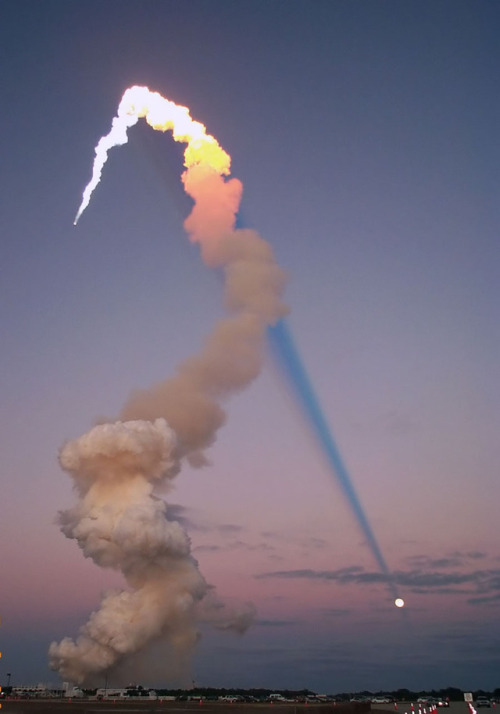
In early 2001 during a launch of Atlantis, the Sun, Earth, Moon, and rocket were all properly aligned for this photogenic coincidence.
Image Credit: Pat McCracken, NASA


Solar eclipse by Holger Krupp

2019 October 17
Moons of Saturn Image Credit: Cassini Imaging Team, SSI, JPL, NASA
Explanation: On July 29, 2011 the Cassini spacecraft’s narrow-angle camera took this snapshot and captured 5 of Saturn’s moons, from just above the ringplane. Left to right are small moons Janus and Pandora respectively 179 and 81 kilometers across, shiny 504 kilometer diameter Enceladus, and Mimas, 396 kilometers across, seen just next to Rhea. Cut off by the right edge of the frame, Rhea is Saturn’s second largest moon at 1,528 kilometers across. So how many moons does Saturn have? Twenty new found outer satellites bring its total to 82 known moons, and since Jupiter’s moon total stands at 79, Saturn is the Solar System’s new moon king. The newly announced Saturnian satellites are all very small, 5 kilometers or so in diameter, and most are in retrograde orbits inclined to Saturn’s ringplane. You can help name Saturn’s new moons, but you should understand the rules. Hint: A knowledge of Norse, Inuit, and Gallic mythology will help.
∞ Source: apod.nasa.gov/apod/ap191017.html
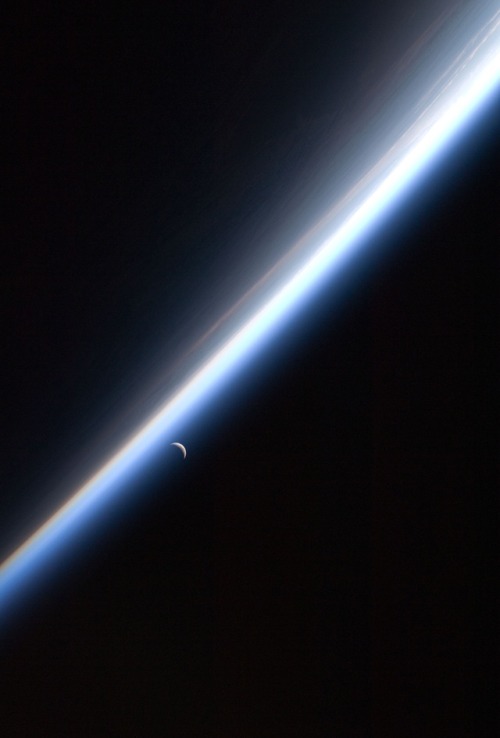
Crescent Moon and Earth’s Atmosphere Seen by International Space Station
Credit: NASA
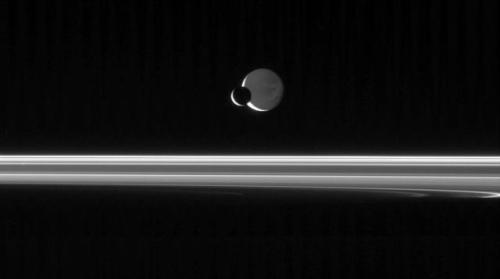
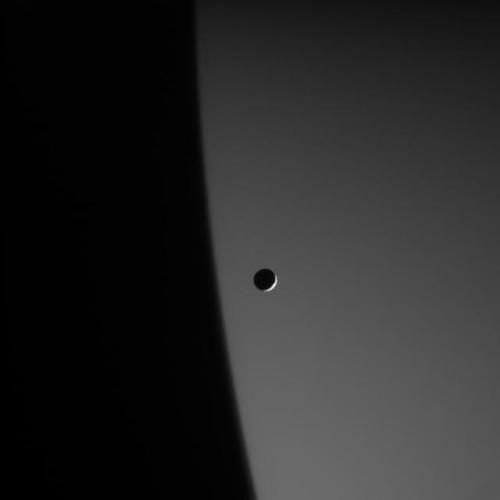
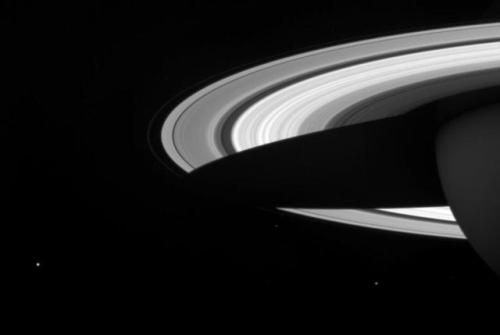
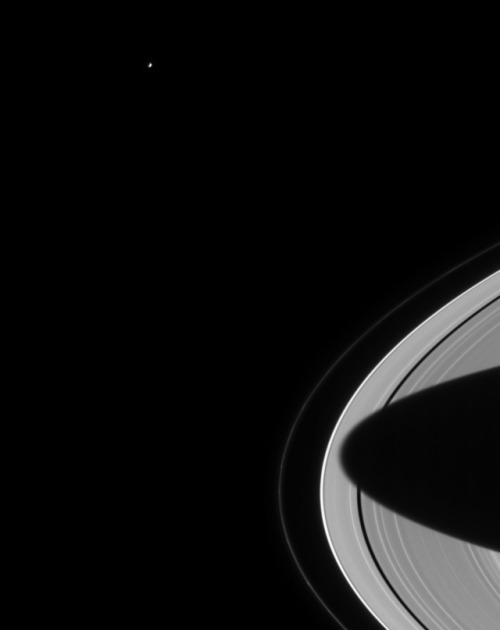
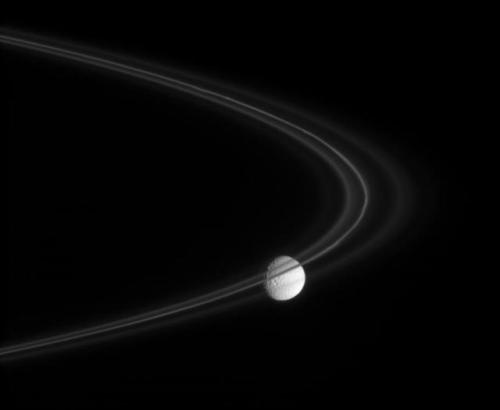
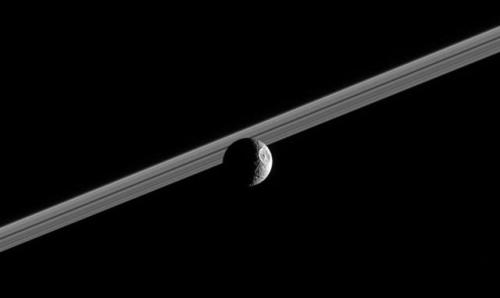
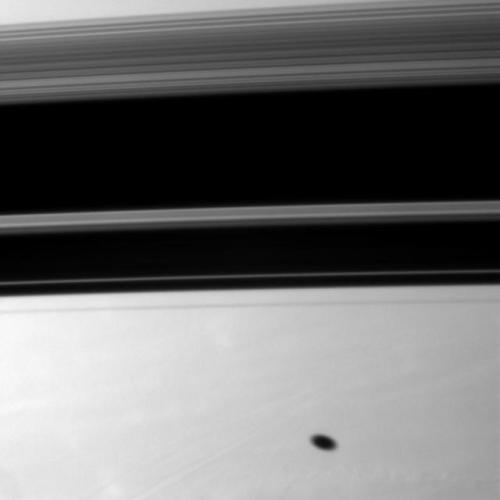
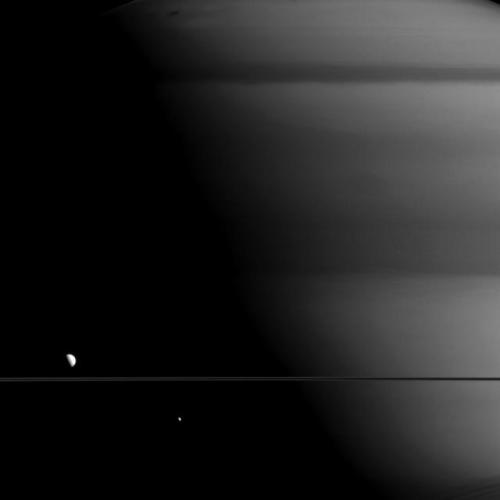
Mimas (moon of Saturn) taken by the Cassini spacecraft.
Credit: NASA/JPL

The Big Dipper
by: VegaStar Carpentier

Wide-Field Ellipse
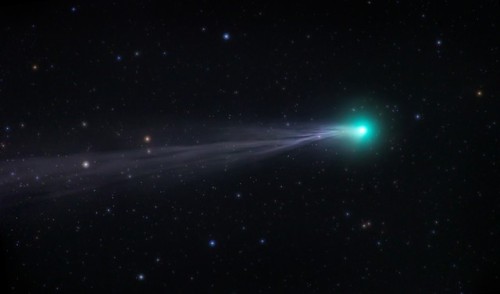
Comet Lovejoy (C/2014 Q2) by: Troy Casswell

This is a photo of the small island of Litla Dimun which is situated between Suouroy and Stora Dimun in the Faroe Islands. It is the smallest of the Islands being less than 100 hectares (250 acres) in size and it is uninhabited. The island is often covered by lenticular clouds. Lenticular clouds, also known as altocumular standing lenticularis clouds, are formed when a current of moist air is forced upwards as it travels over elevated land. This elevation and subsequent decrease in temperature causes the moisture in the air to condense and form a cloud. Lenticular clouds appear to be perfectly stationary but in fact this is not the case. These clouds only appear stationary because the flow of moist air continually resupplies the cloud from the windward side even as water evaporates and vanishes from the leeward side. Lenticular clouds can look like they are hovering for hours or days, until the wind or weather changes and the clouds disperse. They also look like a hat! -Jean Photo courtesy of Caters news agency.

Shuttle Launch As Seen From Space
-
 whyamithewaythatiam reblogged this · 2 years ago
whyamithewaythatiam reblogged this · 2 years ago -
 thunderouslysilent reblogged this · 5 years ago
thunderouslysilent reblogged this · 5 years ago -
 fanartofthelostcities liked this · 5 years ago
fanartofthelostcities liked this · 5 years ago -
 decadenthoagieeaglepalace-blog liked this · 5 years ago
decadenthoagieeaglepalace-blog liked this · 5 years ago -
 thatsnotmycow liked this · 5 years ago
thatsnotmycow liked this · 5 years ago -
 jeebssred liked this · 5 years ago
jeebssred liked this · 5 years ago -
 m-l-e-p liked this · 5 years ago
m-l-e-p liked this · 5 years ago -
 notisaidthechicken liked this · 5 years ago
notisaidthechicken liked this · 5 years ago -
 mbvsfo liked this · 5 years ago
mbvsfo liked this · 5 years ago -
 eykonto reblogged this · 5 years ago
eykonto reblogged this · 5 years ago -
 eykonto liked this · 5 years ago
eykonto liked this · 5 years ago -
 mmuehlfeld-blog liked this · 5 years ago
mmuehlfeld-blog liked this · 5 years ago -
 the-potato-beeper liked this · 5 years ago
the-potato-beeper liked this · 5 years ago -
 a-cottoncandy-cloud liked this · 5 years ago
a-cottoncandy-cloud liked this · 5 years ago -
 gia-is-a-punk-rocker liked this · 5 years ago
gia-is-a-punk-rocker liked this · 5 years ago -
 hollywoodundeadroger liked this · 5 years ago
hollywoodundeadroger liked this · 5 years ago -
 metalzoic liked this · 5 years ago
metalzoic liked this · 5 years ago -
 naturaldee-saster reblogged this · 5 years ago
naturaldee-saster reblogged this · 5 years ago -
 saltywolfie liked this · 5 years ago
saltywolfie liked this · 5 years ago -
 poisonheartfrog liked this · 5 years ago
poisonheartfrog liked this · 5 years ago -
 hellswolfie liked this · 5 years ago
hellswolfie liked this · 5 years ago -
 beecruncher liked this · 5 years ago
beecruncher liked this · 5 years ago -
 citiesandlands reblogged this · 5 years ago
citiesandlands reblogged this · 5 years ago -
 firebirdtransam68 liked this · 5 years ago
firebirdtransam68 liked this · 5 years ago -
 splendeurcaisse reblogged this · 5 years ago
splendeurcaisse reblogged this · 5 years ago -
 forlornapollo liked this · 5 years ago
forlornapollo liked this · 5 years ago -
 spacewheel reblogged this · 5 years ago
spacewheel reblogged this · 5 years ago -
 generation-lost reblogged this · 5 years ago
generation-lost reblogged this · 5 years ago -
 undeadgoathead reblogged this · 5 years ago
undeadgoathead reblogged this · 5 years ago -
 j-tou001 liked this · 5 years ago
j-tou001 liked this · 5 years ago -
 junebuggg420 reblogged this · 5 years ago
junebuggg420 reblogged this · 5 years ago -
 junebuggg420 liked this · 5 years ago
junebuggg420 liked this · 5 years ago -
 schimanskii-blog liked this · 5 years ago
schimanskii-blog liked this · 5 years ago -
 booksloth91 reblogged this · 5 years ago
booksloth91 reblogged this · 5 years ago -
 superbeitmenotyou liked this · 5 years ago
superbeitmenotyou liked this · 5 years ago -
 lifeofhancomic liked this · 5 years ago
lifeofhancomic liked this · 5 years ago -
 jupitorsmoon reblogged this · 5 years ago
jupitorsmoon reblogged this · 5 years ago -
 16fahri liked this · 5 years ago
16fahri liked this · 5 years ago
